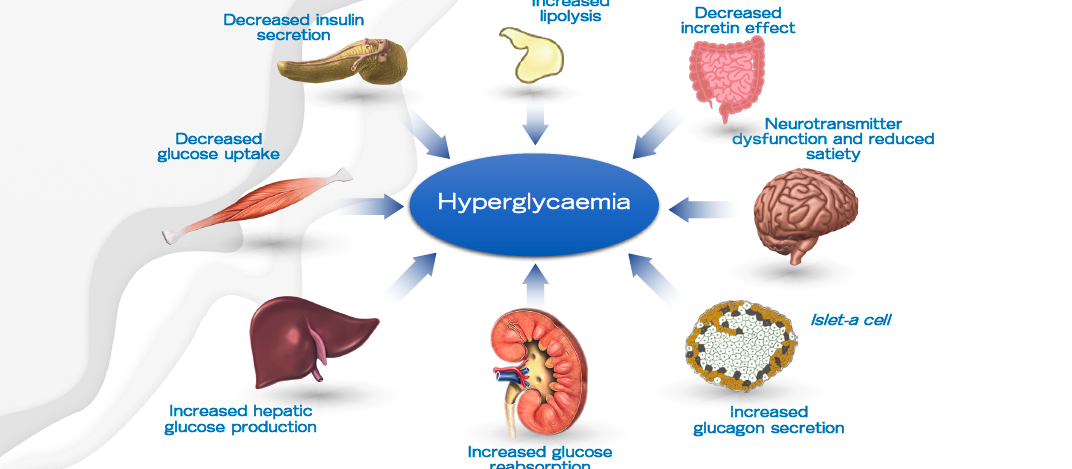Respiratory physician Lutz Beckert considers chronic obstructive pulmonary disease management, including the prevention of COPD, the importance of smoking cessation and pulmonary rehabilitation, and the lifesaving potential of addressing treatable traits. He also discusses the logic of inhaler therapy, moving from single therapy to dual and triple therapy when indicated, as well as other aspects of management
Webinar: Update on interventions to improve glycaemic control in type 2 diabetes
Webinar: Update on interventions to improve glycaemic control in type 2 diabetes

This webinar updates viewers on the importance of glycaemic control for reducing the risk of complications from type 2 diabetes. It is the first in a series of webinars on the management of diabetes, brought to you with the support of Sanofi
This activity has been endorsed by the RNZCGP and has been approved for 1 CME credit for continuing professional development purposes. To claim your credit, log in to your RNZCGP dashboard (rnzcgp.org.nz) to record this activity in the CME component of your CPD programme.
This activity has been endorsed by the College of Nurses Aotearoa (NZ) Inc for 1 hour of professional development (course code CNA065; expires 5 November 2022). You can record your professional development via MyNC (nursingcouncil.org.nz) under the “Continuing Competence” tab.
This webinar is presented by associate professor Gary Kilov and has the following learning objectives:
- Detail the rationale behind timely and effective treatment escalation in type 2 diabetes
- Understand type 2 diabetes treatment inertia and its contributing factors
- Individualise glycaemic targets and personalise therapies according to clinical and personal factors
After you have watched this presentation, you may complete the assessment below to test your understanding of the topic.
This is the first webinar in a series on the management of diabetes.
Watch the second webinar in this series: Insulin therapy for patients with type 2 diabetes
Watch the third webinar in this series: Practical management for patients with diabetes
Watch the fourth webinar in this series: Intensifying insulin therapy for people with type 2 diabetes
This eight-question multiple-choice assessment is designed to demonstrate that the webinar has been effective in allowing you to meet the learning objectives of this course. Write down your answers to these questions.
1. Which TWO of the following are consequences of not escalating treatment early in type 2 diabetes?
a. A vicious metabolic memory, which is not reversed by intensive glycaemic control
b. A virtuous legacy effect, which provides protection over the longer term
c. Accumulation of a bad glycaemic legacy, which drives risk of complications
d. An increased risk of microvascular complications, but no difference in long-term macrovascular complications
e. An increased risk of macrovascular disease, which can be reversed by intensive glycaemic control
2. In the context of diabetes (glycaemia), what is therapeautic inertia?
a. Failure to achieve an HbA1c target of <7% (53mmol/mol)
b. Failure to commence or intensify therapy despite failing to achieve the agreed upon HbA1c goal
c. Failure of specialist services to cope with increases in diabetes-related workload
d. Failure of treatment to reduce microvascular and macrovascular complications
3. What is the biggest contributor to therapeutic inertia in diabetes?
a. Patient-level barriers
b. Provider-level barriers
c. System-level barriers
d. Treatment-level barriers
4. Which TWO of the following are system-level barriers that contribute to therapeutic inertia in diabetes?
a. Healthcare access and costs
b. Lack of knowledge and experience
c. Limited availability of new medications
d. Variations in guideline recommendations
5. It is important to establish an indvidualised HbA1c target as part of the patient-centred approach to glycaemic management in type 2 diabetes. Which of the following patients should be treated most aggressively, aiming for a low HbA1c level?
a. A patient with established vascular complications
b. A patient with low motivation or depression
c. A young patient with an absence of comorbidities
d. An older patient with long-standing diabetes
6. What is recommended by the American Diabetes Association and European Association for the Study of Diabetes for first-line glycaemic control in type 2 diabetes?
a. Exercise and weight loss
b. Metformin and comprehensive lifestyle modification
c. Metformin and/or insulin
d. SGLT2 inhibitor or GLP-1 receptor agonist
7. The choice of second-line medication to be added to metformin is based on patient preference and clinical characteristics. According to guidelines from the American Diabetes Association and European Association for the Study of Diabetes, what is the preferred glucose-lowering medication(s) to add to metformin for those with established atherosclerotic cardiovascular disease?
a. DPP-4 inhibitor
b. GLP-1 receptor agonist or SGLT2 inhibitor
c. Insulin
d. Sulfonylurea
e. Thiazolidinedione
8. Which TWO of the following statements regarding weight loss in diabetes are correct?
a. Medical nutrition therapy is less effective than medications for improving glycaemic control
b. Metabolic surgery should only be considered for patients with diabetes and severe obesity (BMI ≥40.0kg/m2)
c. There is a linear relationship between weight loss and HbA1c reduction
d. Type 2 diabetes of more than two years’ duration cannot be reversed by weight loss
e. Weight management within primary care can achieve remission of type 2 diabetes
Write down your answers to these questions. Then, to check your answers and record your score, click here.
You can use the Capture button below to record your time spent watching and your answers to the following learning reflection questions:
- Why did you choose this activity (how does it relate to your professional development plan learning goals)?
- What did you learn?
- How will you implement the new learning into your daily practice?
- Does this learning lead to any further activities that you could undertake (audit activities, peer discussions, etc)?





![Barbara Fountain, editor of New Zealand Doctor Rata Aotearoa, and Paul Hutchison, GP and senior medical clinician at Tāmaki Health [Image: Simon Maude]](/sites/default/files/styles/thumbnail_cropped_100/public/2025-03/Barbara%20Fountain%2C%20editor%20of%20New%20Zealand%20Doctor%20Rata%20Aotearoa%2C%20and%20Paul%20Hutchison%2C%20GP%20and%20senior%20medical%20clinician%20at%20T%C4%81maki%20Health%20CR%20Simon%20Maude.jpg?itok=-HbQ1EYA)
![Lori Peters, NP and advanced health improvement practitioner at Mahitahi Hauora, and Jasper Nacilla, NP at The Terrace Medical Centre in Wellington [Image: Simon Maude]](/sites/default/files/styles/thumbnail_cropped_100/public/2025-03/2.%20Lori%20Peters%2C%20NP%20and%20advanced%20HIP%20at%20Mahitahi%20Hauora%2C%20and%20Jasper%20Nacilla%2C%20NP%20at%20The%20Terrace%20Medical%20Centre%20in%20Wellington%20CR%20Simon%20Maude.jpg?itok=sUfbsSF1)
![Ministry of Social Development health and disability coordinator Liz Williams, regional health advisors Mary Mojel and Larah Takarangi, and health and disability coordinators Rebecca Staunton and Myint Than Htut [Image: Simon Maude]](/sites/default/files/styles/thumbnail_cropped_100/public/2025-03/3.%20Ministry%20of%20Social%20Development%27s%20Liz%20Williams%2C%20Mary%20Mojel%2C%20Larah%20Takarangi%2C%20Rebecca%20Staunton%20and%20Myint%20Than%20Htut%20CR%20Simon%20Maude.jpg?itok=9ceOujzC)
![Locum GP Helen Fisher, with Te Kuiti Medical Centre NP Bridget Woodney [Image: Simon Maude]](/sites/default/files/styles/thumbnail_cropped_100/public/2025-03/4.%20Locum%20GP%20Helen%20Fisher%2C%20with%20Te%20Kuiti%20Medical%20Centre%20NP%20Bridget%20Woodney%20CR%20Simon%20Maude.jpg?itok=TJeODetm)
![Ruby Faulkner, GPEP2, with David Small, GPEP3 from The Doctors Greenmeadows in Napier [Image: Simon Maude]](/sites/default/files/styles/thumbnail_cropped_100/public/2025-03/5.%20Ruby%20Faulkner%2C%20GPEP2%2C%20with%20David%20Small%2C%20GPEP3%20from%20The%20Doctors%20Greenmeadows%20in%20Napier%20CR%20Simon%20Maude.jpg?itok=B0u4wsIs)
![Rochelle Langton and Libby Thomas, marketing advisors at the Medical Protection Society [Image: Simon Maude]](/sites/default/files/styles/thumbnail_cropped_100/public/2025-03/6.%20Rochelle%20Langton%20and%20Libby%20Thomas%2C%20marketing%20advisors%20at%20the%20Medical%20Protection%20Society%20CR%20Simon%20Maude.jpg?itok=r52_Cf74)
![Specialist GP Lucy Gibberd, medical advisor at MPS, and Zara Bolam, urgent-care specialist at The Nest Health Centre in Inglewood [Image: Simon Maude]](/sites/default/files/styles/thumbnail_cropped_100/public/2025-03/7.%20Specialist%20GP%20Lucy%20Gibberd%2C%20medical%20advisor%20at%20MPS%2C%20and%20Zara%20Bolam%2C%20urgent-care%20specialist%20at%20The%20Nest%20Health%20Centre%20in%20Inglewood%20CR%20Simon%20Maude.jpg?itok=z8eVoBU3)
![Olivia Blackmore and Trudee Sharp, NPs at Gore Health Centre, and Gaylene Hastie, NP at Queenstown Medical Centre [Image: Simon Maude]](/sites/default/files/styles/thumbnail_cropped_100/public/2025-03/8.%20Olivia%20Blackmore%20and%20Trudee%20Sharp%2C%20NPs%20at%20Gore%20Health%20Centre%2C%20and%20Gaylene%20Hastie%2C%20NP%20at%20Queenstown%20Medical%20Centre%20CR%20Simon%20Maude.jpg?itok=Z6u9d0XH)
![Mary Toloa, specialist GP at Porirua and Union Community Health Service in Wellington, Mara Coler, clinical pharmacist at Tū Ora Compass Health, and Bhavna Mistry, specialist GP at Porirua and Union Community Health Service [Image: Simon Maude]](/sites/default/files/styles/thumbnail_cropped_100/public/2025-03/9.%20Mary%20Toloa%2C%20Porirua%20and%20Union%20Community%20Health%20Service%20in%20Wellington%2C%20Mara%20Coler%2C%20T%C5%AB%20Ora%20Compass%20Health%2C%20and%20Bhavna%20Mistry%2C%20PUCHS%20CR%20Simon%20Maude.jpg?itok=kpChr0cc)